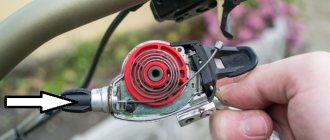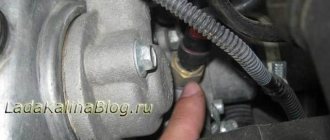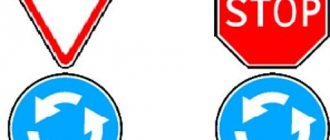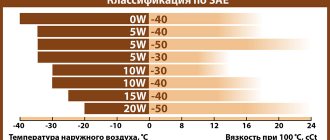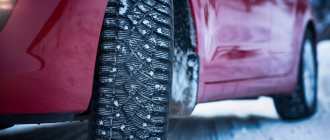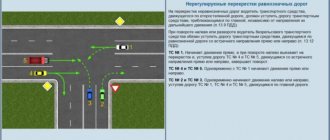Ski turns
Main types of ski turns:
- on the spot;
- in move.
Sometimes you need to turn around while standing on the ski track to change direction. On slopes of varying steepness they turn actively, without stopping. It is more difficult to turn while sliding. The skier has to solve several important problems:
- maintain balance;
- turn around without losing speed;
- don't get injured.
You should train on gentle slopes or plains. When performing exercises, it is necessary to control the position of the entire body.
Weather
Weather is one of the main obstacles for drivers. On a slippery road you need to be as careful as possible so as not to get into a skid when turning a corner. Problems with ice and snow are not a hindrance only for an experienced motorist if he follows the proper technique. By gaining experience and taking the right actions, you will easily understand how to correctly enter even the most dangerous turns in your car.
Methods of turning in motion and in place
Regardless of the position of the skier on the track (standing, moving), there are ways to turn on skis:
- stepping over;
- left or right swing;
- jumping with and without support;
- emphasis;
- plow
Important. It is recommended for a beginner to try all the methods and select the most comfortable ones. Each method, although easy to perform, requires multiple repetitions to understand how to move and bring the process to perfection.
On the spot
The easiest way to turn is by stepping over the back or front of the ski. They begin to step with the inside leg, located closer to the turn. For example, when turning right, they step with their right foot. Reminiscent of stepping with regular side steps without crossing. How to do:
- take the starting position: place your legs parallel, sticks near the fastening, bend your knees slightly;
- shift your weight to your outside leg;
- together with the withdrawal of the stick, set the inner leg aside, without lifting the heel or toe from the snow in accordance with the part through which the twist is made;
- place the second leg parallel;
- repeat until the desired angle is made.
Swing your right or left leg to turn much faster. This method is used to turn around on a narrow ski track. Actions are performed quickly, without staying in one position for long:
- place your legs parallel, hold the poles at the fastening;
- shift your weight to one leg (for example, your right leg);
- tear the second leg (left) off the snow and turn it along with the body (to the left);
- simultaneously move the stick behind the supporting leg (right);
- place your foot in the direction opposite to the starting position;
- place the second leg along with a turn of the body.
The third way to turn around is to jump in place:
- without support - bend your knees, jump and jerk in the required direction;
- with support - jump up, leaning on widely spaced sticks (so as not to interfere).
Attention. There is no need to jump too high or only slightly lift your feet off the snow. In both the first and second cases, you can lose your balance.
In move
The easiest way to change direction when sliding is to step over. There are two methods in accordance with the transfer of load to the outer or inner ski. Most often, the twist is done by leaning on the leg closest to the twist, but it is better to master both methods. How to do:
- transfer weight to the inner ski;
- slightly raise the front part of the second ski, as when stepping in place, and place it at a slightly angle (to the side) on the inner edge;
- transferring your weight to your outside leg, push off from the snow along with a push with the sticks.
The step resembles that of a speed skater. Depending on the radius of the turn, they push off several times. At the end of the turn, the working outer leg is parallel to the inner one.
You can turn with a stop on moderately steep slopes when moving quickly along the slope. The method differs from stepping over by the position of the outside leg. Performing a persistent turn:
- transfer body weight to the inside leg;
- move the heel of the outer leg to the side at an angle, and push the front part forward and place it on the inner edge;
- turning, smoothly transfer your body weight to the outer leg;
- After passing, place your legs parallel.
The steepness of the turn depends on the angle of deflection of the outside leg, as well as the placement on the edge. To understand how to properly transfer body weight, it is recommended to practice on site. You should train alternately in both directions.
The method of turning a plow on skis is perfect for steep, spacious slopes with compacted snow. Compared to other methods, the “plow” slows down the skier, so it is rarely used in sports competitions. However, for beginners and amateurs, this is a great way to overcome a difficult descent and avoid falling.
How to make a “plow”:
- start the descent in the starting position;
- gradually bring the front parts together, spreading the back parts (the “plow” position);
- stand slightly on the inner ribs;
- direct your body weight depending on the side of the twist.
If you need to turn left, the weight is transferred to the right leg. Turning in the opposite direction, the skier changes legs. During one descent you can turn several times in different directions.
Common mistakes
The most common mistake that can end in disaster is speeding when cornering. Too much speed leads to loss of control, the car begins to throw, and as a result is thrown off the road. On a slippery road, a car may simply refuse to turn and fly straight into the bushes on the side of the road. To avoid this, it is better to play it safe and slow down to a minimum than to get into an accident. It’s not for nothing that bikers have a saying “if you can go at a certain speed, then it’s better to go 2 times slower.”
Another common mistake
is an attempt to play with the pedals and gear lever right in the turn. If you squeeze the clutch, the relationship between the engine and the wheels is disrupted, which leads to a decrease in the controllability of the car. In cornering conditions, this can lead to complete loss of control. Pressing the brake pedal in a car with an automatic transmission works in exactly the same way, only in this case there is also a risk of skidding. Any impact on the brake pedal while the wheels are turned can lead to skidding of the rear axle.
Sometimes, beginners make mistakes when working with the steering wheel. You don't want to go into a turn at too steep an angle, unless that's the only way to get into the turn. The best way to enter a turn is to turn the steering wheel smoothly. When turning right, your hands should be at the 8 and 12 o'clock positions on the steering wheel. If we turn left, then at 4 and 12. This will allow you to control the steering wheel with maximum efficiency. You should not make sudden movements; you should enter the turn in a gentle arc. It is forbidden to hitch into the oncoming lane. If oncoming traffic appears there, it will be very difficult to avoid a collision. It is also not recommended to drive along the side of the road, especially at high speed. It's all about the different coefficient of road grip; if one wheel has this indicator reduced, then there is a possibility of losing control of the car.
Conclusion
. Every year hundreds of young drivers take to the roads. Unfortunately, training in driving schools is far from ideal. Therefore, beginners are left with many questions. One of them is how to properly enter a turn with a manual or automatic transmission. In fact, there is not much difference in cornering here. But, there are some differences in the process of driving a car, which, in principle, can affect cornering. It is advisable for the driver to know all these nuances.
Beginner street racers do not try to take turns in their cars; they strive to become faster through speed, imagining that they are on a race track. This is a fundamentally wrong approach, since the trajectory of the maneuver is decisive. There are also many factors to consider when approaching a turn.
The fundamental factor is . The vehicle can maneuver over a large or small radius. The maximum trajectory allows you to overcome the turn faster while maintaining dynamics than when passing along the shortest path. At the same time, the high speed of the car during the maneuver makes it stable.
Downhill skiing technique
Now let's look at how to turn on alpine skis. The technique differs little from cross-country skiing: all of the above methods are used on mountain slopes. However, in skiing technology there are special methods that help you glide and smoothly descend slopes of varying steepness.
Traverse
This is an oblique descent along the slope, which will help you get around the bumps along the way. Having mastered the traverse technique, it is easy to learn how to “cut” turns.
To perform a traverse you must:
- get into the starting position with your feet across the slope;
- slightly push the top ski forward along the slope and place it on the outer edge;
- place the lower leg on the inner edge;
- push off with sticks and move across the slope;
- By pressing on the inner edge (rib), control the speed of movement and the angle of inclination.
Having reached the opposite side of the slope, you need to turn smoothly (for example, by stepping) and continue sliding with a traverse in the opposite direction. The workout can be combined with lifting techniques.
Carved turn
The most common turning technique on alpine skis is the cut turn or carving. To successfully perform it, you need to master the traverse and the “plow”. How to perform a basic carving turn:
- stand in a traverse stance: across the slope, slightly extending the top ski placed on the outer edge;
- rest on the lower ski standing on the inner edge;
- start sliding;
- smoothly straighten your knees and move your upper back to the side, taking a “half-plow” stance;
- bend your knees smoothly;
- straighten your knees again and place your legs parallel, returning to the traverse.
You can practice on the spot. When descending, the more pressure on the lower edge, the sharper the turn. The radius depends on the cut of the skis.
Turns on parallel skis
Turning on parallel skis helps you descend with the least amount of effort and without slowing down. The preparation resembles the stand-up technique, but the legs remain parallel.
How to do:
- take the traverse position;
- bend your knees when entering the turn;
- straighten your knees, increasing the weight on the inner rib.
The legs should remain parallel. Sticks are used to maintain balance. Shifting your weight first to one or the other leg, it’s easy to go through several turns, smoothly descending with a traverse.
With any technique, you should rotate the body, this significantly increases maneuverability. Turning the body inside the turn leads to a decrease in the radius and a slowdown. Accordingly, outward rotation leads to the opposite effect: an increase in radius (a straighter trajectory will be obtained) and acceleration.
Features of turns with different transmissions
To begin with, let's look at the features of cornering on mechanics. This type of transmission is a little more difficult to learn. After the driver gets used to it, there won’t be any particular difficulties, but at the beginning it will be a little more difficult. So, let’s look at the stages of turning on this type of transmission:
- As we have already understood, passing a turn begins with preparation, or rather with deceleration. Mechanically, this can be done in three ways. Simply slow down, apply the brakes, and apply engine braking. If everything is clear with the first 2 points, then it makes sense to examine the last one in more detail. Essentially, engine braking
involves shifting to a lower gear, which results in a decrease in speed. It is used when the road is quite slippery; in such conditions, using the braking system will lead to loss of controllability; - Entering a manual turn must be done with constant traction. This will prevent you from losing control of the vehicle;
- The passage must be accompanied by control of all parameters. The speed should remain stable, or at least decrease slightly;
- Corner exit will depend on the type of drive. Rear-wheel drive is more sensitive to gas operation. If you start increasing the speed at this moment, you may end up skidding to the inside of the turn. On the contrary, on front-wheel drive, it is recommended to slightly increase the speed to stabilize the trajectory.
In general terms, driving a car with an automatic transmission is practically no different from a manual one. There is only one difference here. Impossibility of engine braking. Therefore, when driving in winter, it is recommended to maintain a low speed so that you do not have to brake sharply, which will lead to problems with handling. Perhaps the inability to use engine braking is the biggest disadvantage of such a transmission.
Braking techniques
Smooth and fast riding depends on proper braking. The braking technique is similar to making a turn. There are three main types:
- plow - the wider the rears are spread, the higher the braking;
- with emphasis - one leg provides resistance;
- lateral sliding - placed across the slope, the knees bend, close tightly and move back, while the body looks forward.
Important. Braking with sticks only slows down the descent, helping to correct the slide in front of obstacles.
Mastering basic turning and braking techniques (stepping, plowing, stopping) will give you confidence when riding. Training with high repetitions will help you master a new skill and overcome the tightest corners.
Vehicle speed when turning
Before entering a turn, you must reduce the vehicle speed. It should be remembered that while the car is passing through an arc, it is necessary to maintain a constant speed.
Turn safety
depends on the correct turn of the car. To make a safe turn, you should begin to reduce speed on a straight section of the road well before the turn, which eliminates the effect of wheel slipping and the possibility of the car skidding when turning.
We've briefly looked at what you need to consider when approaching a turn - speed and trajectory. And now in more detail about the driver’s actions when entering a turn, driving in a turn and exiting a turn.
Speed and Incline
If the speed of the motorcycle is too high, then inside the turn you have to increase the slope, because the motorcycle does not have time to turn when it is not a long, flat radius of the road, but a sharp corner into which you need to drive. At high speed it is convenient to pass smooth long arcs, but not sharp corners, especially when you have passed the moment of entry.
At low speeds, the motorcycle simply falls over under the influence of gravity. We remember that speed levels the motorcycle, lifts it into a vertical position. The motorcycle turns inward. Thanks to leaning, we turn. When the slope of the motorcycle is high and the speed is low, nothing gives it the opportunity to maintain balance and move on, you simply fall inside the turn and roll head over heels to the whistling of your comrades and cries of “this is a fiasco, brother.”
The speed and tilt of a motorcycle always go hand in hand; in fact, these are truly interdependent indicators.
How to reverse text in Word
How to reverse text in Word - this is relevant for those who are trying to create complex documents that include flowcharts, complex tables, etc. This action is quite easy to do and will not cause any difficulties even for those who do not work much in Microsoft Word. In this case, of course, you need to know where to click, which function buttons to use, and most importantly, which method of rotating text will be most suitable in a given situation.
How to flip text vertically in Word
The easiest way to rotate text is to use a table.
This is also due to the fact that such an operation is most often used here, because if the column is too narrow, and its length is very large, in a normal horizontal position only individual letters will be visible here, the rest will be transferred and the word (phrase) will be completely unreadable . Consider the possibility of rotating the text by creating a new table (if you already have a table, steps 1 and 2 are skipped):
- Go to the "Insert" tab.
- Click on the “Table” icon and set the number of columns and rows here (as we are only considering the text rotation function, for the example we will set one column and one row).
- Place your mouse cursor inside the created cell and go to the Layout tab.
- In the toolbar there will be an icon called “Text Direction”, clicking on which will rotate the text exactly 90 degrees. When pressed again, it will rotate 180 degrees, then 270 degrees.
- As a result, we can conclude that any text can be rotated in any direction without much difficulty. If the text should not be surrounded by any frame, then in this case you just need to go to the table properties (even in our case, the only cell is also a table), in the first tab click on the “Borders and Fill” button and in the “Type” column select the value "No". After this, although a barely noticeable gray frame will be displayed on the screen, it will not be printed when printing.
A significant disadvantage of this method is that it is impossible to choose an arbitrary angle of inclination; you can only turn it at a right angle.
In general, this is quite enough, because Microsoft Word is usually used to create documents for reporting, and not any design projects, but in some cases this functionality may not be enough.
In this case, you must use another method, which will be described below.
How to rotate text in Word 90 degrees
The essence of this method is that here the text will be converted into a picture, after which it can be dragged to any point on the sheet.
It’s just worth considering one point right away: if a document is made for reporting or for submission to official authorities, for examination at an educational institution, this method will not be entirely correct, since it is impossible to move the image by eye with an accuracy of a millimeter, and Accordingly, this will already be a deviation.
So, to convert text into an image and then rotate it by a certain angle, you need to:
- On the menu bar, go to the “Insert” tab.
- Among the icons presented, click on “Shapes”.
- In the pop-up menu, the first image will be “Inscription”, click on it.
- After this, the cursor will look like a cross-shaped icon. Hold LMB and draw a rectangular area in which the inscription will be placed (later, you can drag the resulting rectangle to any part of the document page).
- Write the desired text or phrase in this area.
- At the top of the program window, find the icon that says “Text Direction,” click on it and select one of the two proposed values, after which the reversal will be completed.
Sharp turn road sign
You can find out that there is a sharp turn ahead by looking at the road sign. Therefore, you must always be attentive and focused while driving. At such moments, limited visibility can play a cruel joke.
In general, a turn in the road is a very important part of the route for the driver, especially in winter. As you know, at such a moment a centrifugal force acts on the car, tending to throw the car off the road. At the same time, speed becomes the most faithful ally of centrifugal force. If the speed doubles, then the centrifugal force quadruples.
The “Sharp bend in the road” sign is always installed on the roads, but you still need to be careful. In the new traffic regulations, the “Dangerous Turn” sign is a warning sign. Usually it is installed 100–300 meters before the turn, so that the driver has time to prepare for it. It is important to know that overtaking when making a sharp turn is prohibited, but overtaking is allowed on the road from the sign to the beginning of the turn.
In conclusion, I would like to wish all drivers good luck on the roads and constant concentration. Driving a car is first of all a great responsibility, and only then a pleasure - remember this!

